Pompeii fascinates. The Roman city attracts some 2 million visitors a year. Today, this classified site is in danger and could disappear a second time. A look back at the history of a prosperous city which fell victim to the wrath of Vesuvius.
Summary
- Pompeii before the eruption
- A seemingly extinct volcano
- An extraordinary and surprising eruption
- Immortal remains
- Protecting Pompeii so as not to forget
It is surely one of the most striking and famous natural disasters in all of human history and more particularly in Roman history. However, what do we really know about the eruption of Vesuvius which engulfed the city of Pompeii and many other surrounding cities such as Herculaneum and Stabies?
In the year 79 of our era, on August 24, Vesuvius erupted and caused the death of more than 15,000 inhabitants in just 48 hours and changed the landscape forever. How to retrace the incredible story of this cataclysm? How can we relate the last hours of the population before the terrible disaster? It is in particular by relying on the Letters of Pliny the Younger, senator and famous Roman lawyer, who recounted the events when his uncle, Pliny the Elder, a very great scientist at the time, who left for Pompeii to see the closer eruption.
However, it was from the 19th century that archaeologists uncovered the first remains of the ancient Roman city.

Pompeii before the eruption
The city of Pompeii has always been a city with a flourishing economy because it benefited from a very interesting geographical location, which made it a very popular vacation spot for the Romans. Pompeii was known to be quite a wealthy city.
If, on the political and cultural level, Pompeii did not have the magnitude of Rome or Florence for example, the catastrophe which froze the city forever under the tons of debris and ashes of the volcano made it an exceptional place, a kind of retrospective and a precious mine on the daily life of the Romans in the 1st century of our era.
The population of the city of Pompeii was nearly 12,000 souls and the city was built on one side at the foot of the volcano and, on the other side, was bordered by the sea.
Documentary broadcast on France5, “The disappeared city of Pompeii”, and uploaded by a user on YouTube
A seemingly extinct volcano
For the inhabitants of Pompeii, everyone knew that the volcano of Vesuvius had never gone to sleep for good because there were frequent tremors that demonstrated the opposite. Writings relate that Vesuvius was the subject of various stories but this was never a source of concern. But they were far from imagining the calamity that was about to befall them, both literally and figuratively.
A first alert, however, had occurred in the year 62, during the reign of Nero. A major earthquake had destroyed a large part of the buildings of Pompeii. But it was without counting on the rich notables of the city who had rebuilt magnificent residences decorated with frescoes, paintings, statues and mosaics or private fountains. Pompeii had quickly become a place to rest away from the turpitudes and noise of Rome.
An extraordinary and surprising eruption
According to the first commonly accepted sources, the eruption would have occurred on the afternoon of August 24, 79. Within 24 hours, the volcano began to spit columns of clouds of incandescent clouds typical under the umbrella-pine shape up to 30 kilometers from the ground.
As it fell, these tons of volcanic ash covered the city of Pompeii as well as the towns of Herculaneum and Stabiae under 6 meters of mud and the port of Herculaneum (which nowadays is found inland because the beach has moved back because of the catastrophe) where the habitat was less opulent than in Pompeii, was crushed under a flow of rock and lava.
Dwellings and other structures began to crumble from the ash and volcanic debris and residents were trapped under the rubble in no time. Hundreds of other people died of suffocation under the blow of the fiery clouds (pyroclastic flow located at its base and from which rises a pyroclastic cloud). For hours, the volcano spat and released rocks and lava that tumbled down the sides of the mountain to bury and destroy everything in front of them.
The phenomenon was so brutal and so fast that the inhabitants could not flee and many found themselves burned, blocked and asphyxiated without even realizing it.
In just over 48 hours, nearly 15,000 people will die under this natural disaster of considerable magnitude and which changed the Neapolitan landscape and that of an entire region for centuries.
It was Pliny the Younger who gave a detailed account of the disaster he witnessed and since then, vulcanologists have given the name ” Plinian eruption ” to describe this type of volcanic eruption.
Pliny the Younger relates the story where his uncle, Pliny the Elder, a famous scientist and historian, died of asphyxiation at Stabiae after trying to help the unfortunate Pompeians.
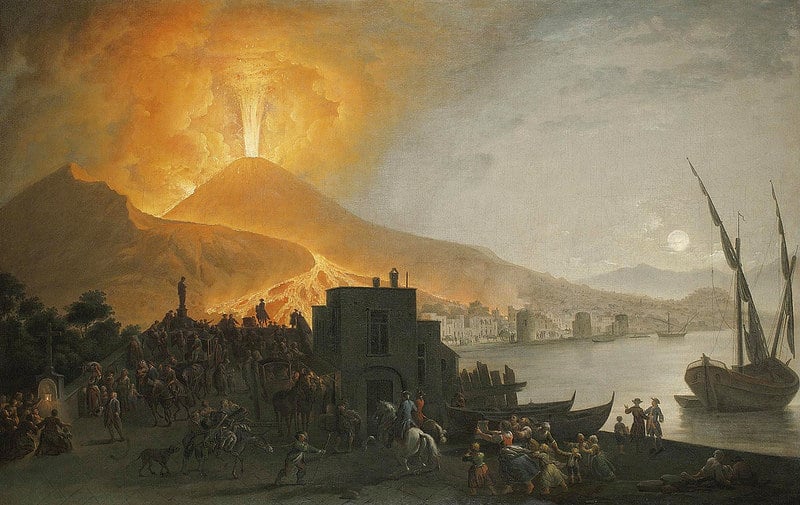
Immortal remains
Contrary to popular belief, not the entire population of Pompeii perished during the volcanic eruption. Indeed, 10% of the inhabitants died in the disaster knocked out by the rocks, or the structures of the houses which were shattered or burned alive by the boiling lava. The rest of the population wandered, between tears and cries of terror, in the surrounding countryside to call and look for the members of their families.
These are excavations carried out from 1872 which brought to light thousands of bodies (about 2000) frozen in the ashes. Most of the bodies remained frozen as they were at the time of the volcanic eruption. Indeed, the latter was so strong with a considerable number of debris and ashes that it covered bodies and everyday objects, thus preserving them from natural oxidation.
This made it possible to discover how the population lived then, what were their daily activities, how people dressed, how they fed themselves.
Many of the skeletons were naturally very well preserved, some still had all their dentition (their teeth were in good condition and as such, it is believed that they had a balanced and varied diet) while others still had shreds or traces of their clothing (tunics and dresses).
During the excavations, it was discovered that the furniture and the bodies instantly buried under tons of ashes and various debris gave way to intact cavities.
It was the archaeologist Giuseppe Fiorelli who had the idea of injecting plaster into the said cavities to restore the shape of the inhabitants, hence the presence of the striking casts, when one is on the spot, like “the man seated hiding her face” and the “pregnant woman”.
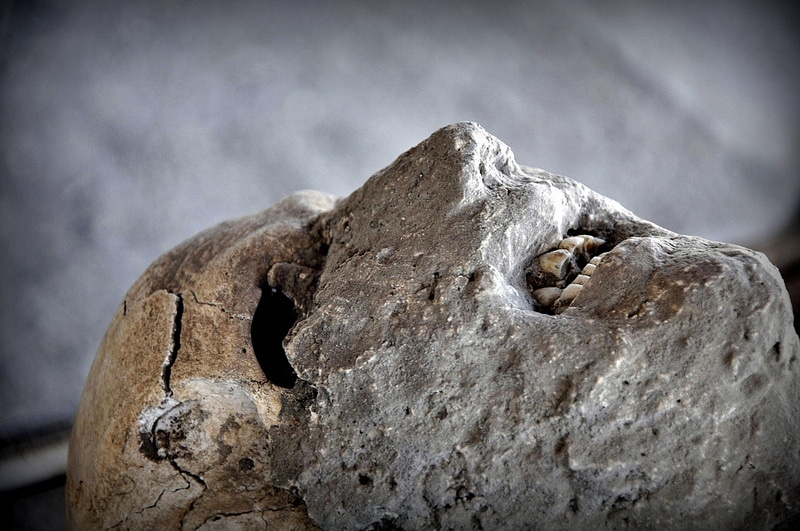
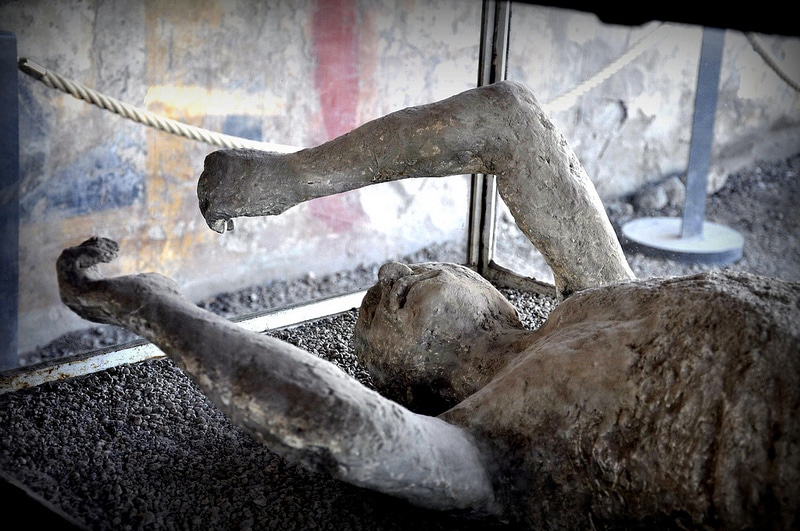
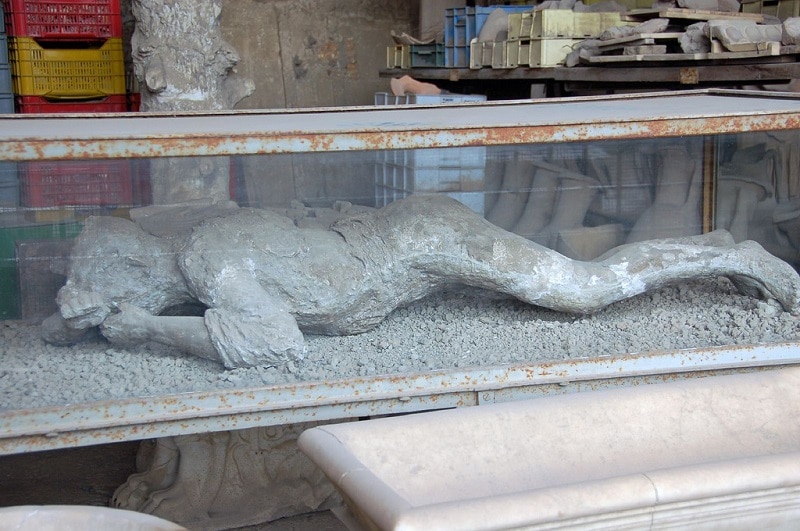
Protecting Pompeii so as not to forget
Excavations and excavations have brought out the remains of private houses, the theater, the amphitheater, the barracks of the gladiators but also shops, temples, the forum, the remains of the basilica, “thermopolium” who were the ancestors of the current “fast food”, etc…
Nowadays, it is estimated that there are still many discoveries to be made in the basement of Pompeii.
Registered as a UNESCO heritage site since 1997, the site of Pompeii continues to cause concern: not only because of the various bad weather which sees the structures weaken and deteriorate but also the mass tourism which damages the structures and dwellings.
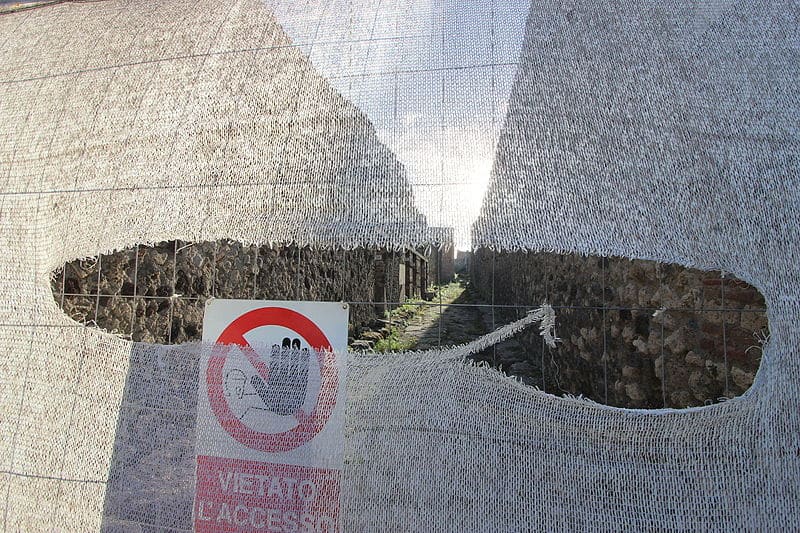
Even if the last eruption of Vesuvius (albeit on a smaller scale) dates from the end of the 19th century, we often hear that the greatest risk that threatens the site today is the poor management of resources and government subsidies and from Europe. The country would have trouble preserving this site, which has been listed as a UNESCO World Heritage Site since 1997 and has since been threatened with being listed as a World Heritage Site in Danger. Things have moved on recently since the European Union warned last year that it was withdrawing funding for the Great Pompeii Project, a program to conserve, maintain and restore the site.
The Italian government has begun to provide funding, but despite this and even if archaeologists and workers are hard at work to preserve what remains of Pompeii, the city is not immune to a second disaster, this time caused by time and Man. A third of the city is still underground, and it should stay that way, under cover. In the meantime, it is important to preserve the remaining two-thirds as best as possible, to delay the inevitable collapse of the city.
The excavations seem to have generated more questions than they probably answered. Looking at the city of Pompeii today, looking at the grand theatre, extensively rebuilt and restored over the last century, it’s hard not to wonder if Pompeii will disappear again, very soon.
Did you like this article? Do not hesitate to share it on social networks and subscribe to Discover the World on Google News to not miss any articles!